In Ancient Rome, education played a pivotal role in shaping the societal framework. It was a cornerstone of Roman culture, influencing both the elite and common citizens. The educational system was designed to uphold and perpetuate the hierarchical structures of Roman society.
Education was highly valued for its potential to prepare individuals for civic responsibilities and contribute to cultural and intellectual development. While patrician children received formal education from private tutors, plebeian children often learned through apprenticeships and military training. This dichotomy in educational pathways underscored the social distinctions prevalent in Roman society.
By examining the educational practices of Ancient Rome, one can gain insights into how these systems reinforced social order and allowed limited mobility for those outside the elite class.
Patrician Education System
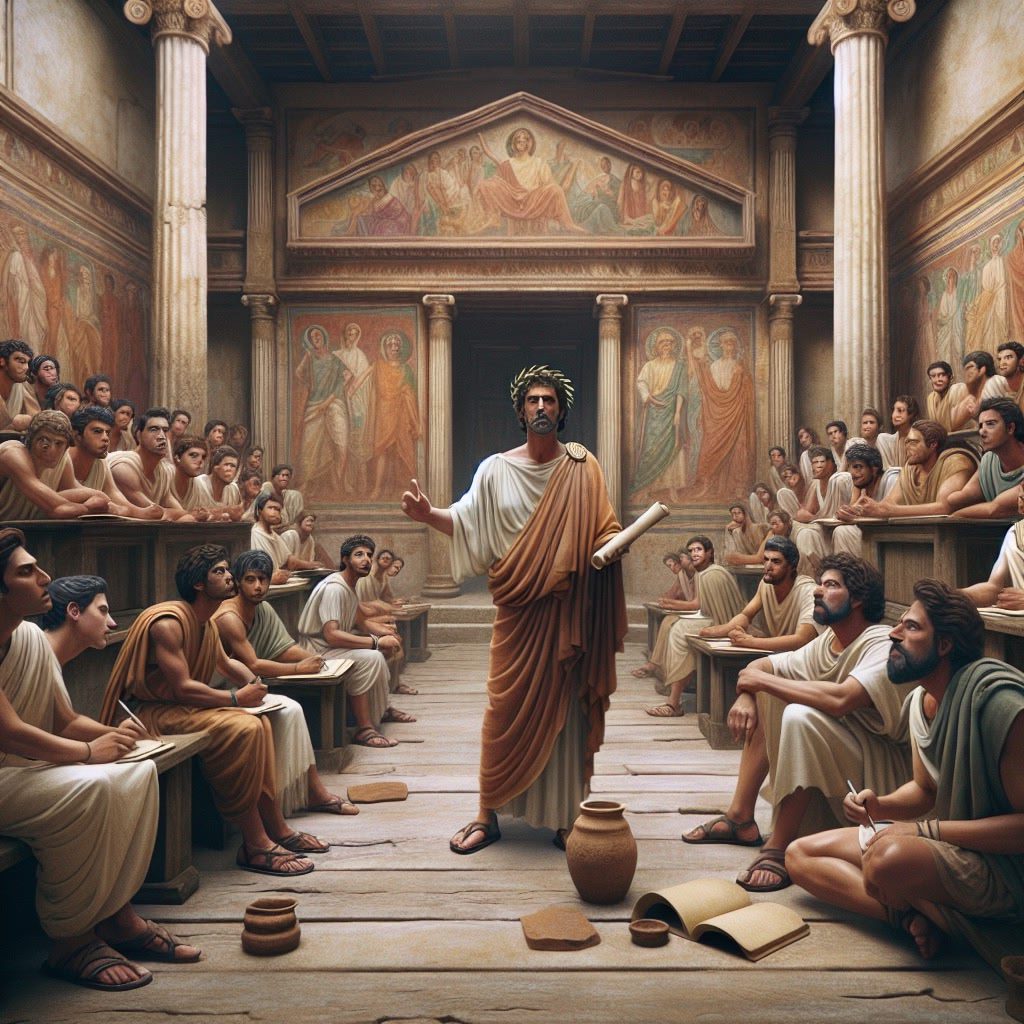
The education of patrician children in Ancient Rome was characterized by exclusivity and privilege. Reserved for the elite, it was a system designed to prepare young patricians for leadership roles within Roman society. Private tutors played a crucial role in this educational framework, offering personalized instruction that catered to the intellectual and cultural aspirations of the patrician class.
Among the essential subjects taught were rhetoric, philosophy, and literature. Rhetoric was paramount, as it equipped students with skills necessary for public speaking and political discourse. Philosophy encouraged critical thinking, enabling students to engage with complex moral and ethical issues. Literature, particularly the study of Latin and Greek texts, provided a deep understanding of cultural heritage and historical context.
This rigorous education system not only reinforced the social hierarchy but also ensured that the patrician class was well-prepared to assume positions of power and influence, perpetuating their dominance across generations.
Plebeian Learning Pathways
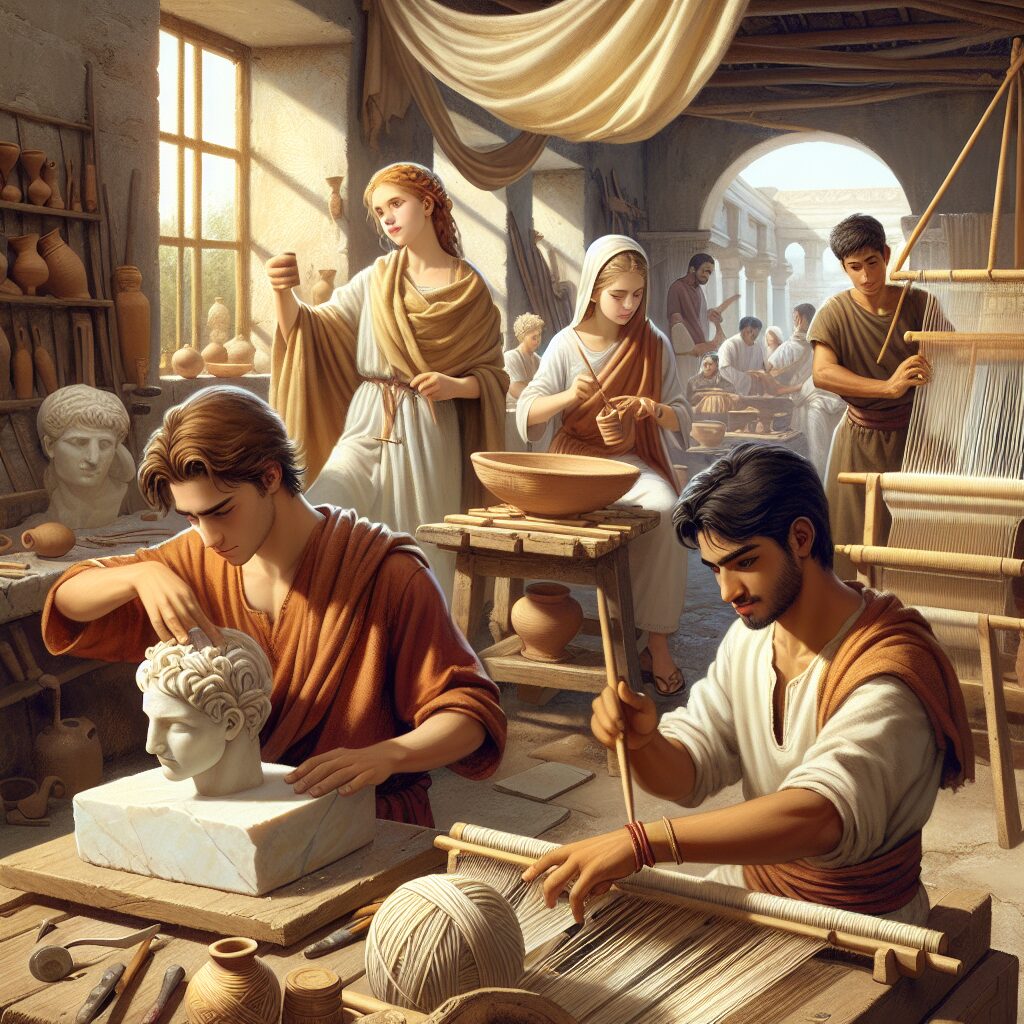
In stark contrast to the formal education received by patrician children, plebeian youths in Ancient Rome followed more pragmatic learning pathways. The absence of private tutors did not deter them from gaining essential skills. Instead, they cultivated expertise through trade apprenticeships and military training, which served as viable educational avenues.
Trade apprenticeships played a vital role in the education of plebeian children. Under the guidance of skilled artisans, they learned specific crafts and trades, ensuring economic self-sufficiency. This hands-on experience was instrumental in equipping them with practical skills necessary for various occupations within Roman society.
Meanwhile, the Roman military offered another avenue for education. Military training was not only a means of defense but also an institution that taught discipline, strategy, and leadership. For many plebeians, joining the military provided opportunities for social mobility, as exemplary service could lead to advancement within the ranks.
Thus, while patrician education emphasized intellectual pursuits, plebeian pathways focused on tangible skills, reflecting the diverse needs and roles within Roman society.
Education and Social Hierarchy
In Ancient Rome, education served as a potent instrument of social stratification, reinforcing the divide between patricians and plebeians. Patrician children enjoyed access to private tutors who imparted knowledge in rhetoric, philosophy, and literature, preparing them for leadership and governance roles. This exclusive educational privilege not only perpetuated class distinctions but also ensured the continuation of elite dominance in Roman society.
Despite the rigid structure, education occasionally offered a conduit for upward mobility. Instances of plebeians rising through the ranks were not unheard of, particularly through military service or administrative competence. For some, the acquisition of rhetorical skills or exceptional valor in military endeavors opened doors to higher social standing and influence.
However, such cases were exceptions rather than the norm, as educational opportunities were largely designed to maintain existing hierarchies. While the Roman education system provided a framework for societal roles, it also subtly upheld the barriers that separated the elite from the common populace.
Role of Education in Roman Society
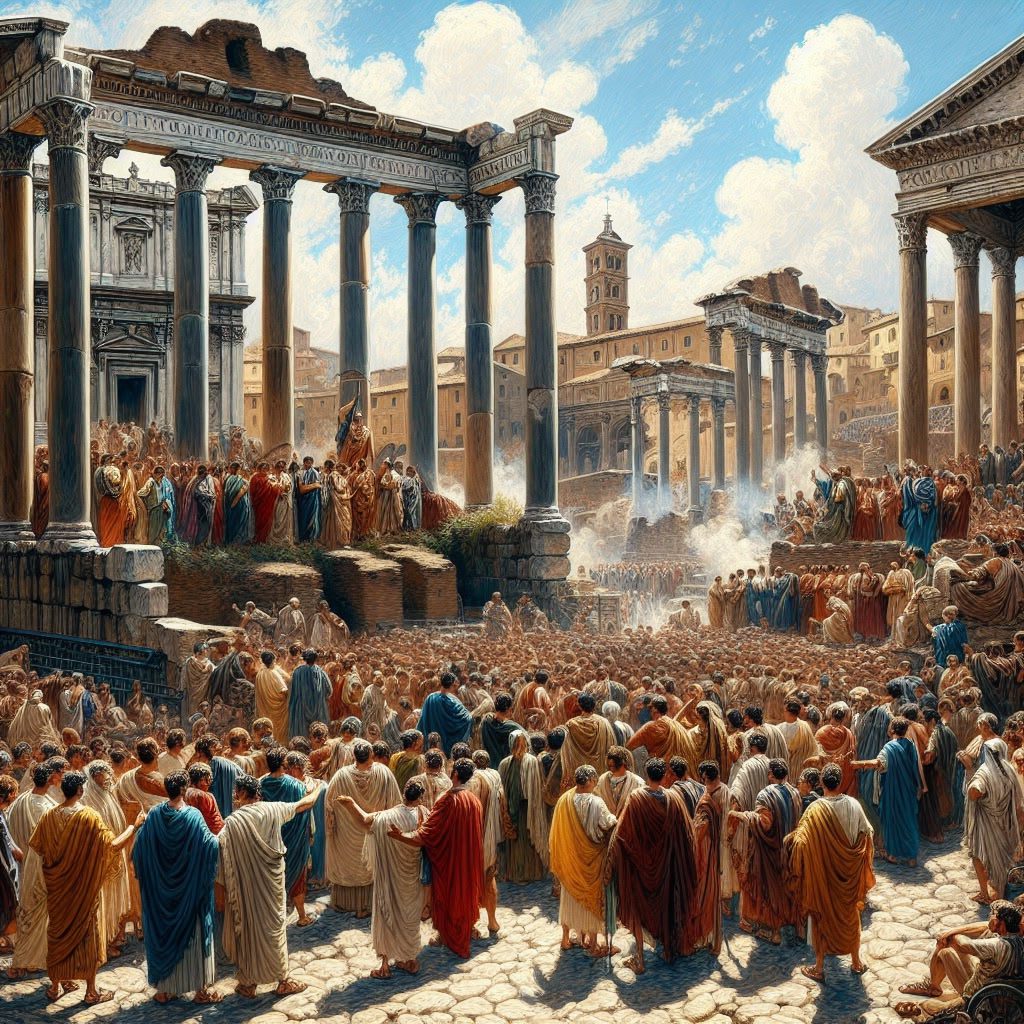
Education in Ancient Rome was pivotal in shaping citizens for their civic duties. The patrician class, through rigorous training in rhetoric and philosophy, cultivated future leaders who were equipped to navigate the complexities of governance and public life. Mastery of eloquence and philosophical thought was not merely academic; it was a preparation for active participation in the Republic’s political arena.
Beyond civic preparation, education also served as a catalyst for cultural and intellectual development. The study of literature and the arts fostered a rich cultural tapestry, contributing to Roman intellectual life. This cultural engagement elevated societal discourse and facilitated the preservation and dissemination of Roman values and traditions. The educational system thus played a dual role, equipping individuals for public responsibilities while also enriching the cultural fabric of Roman society.
Through this dual focus, education in Rome was not just a personal asset but a cornerstone of societal advancement, influencing both the governance and the cultural legacy of the civilization.
Gender and Education
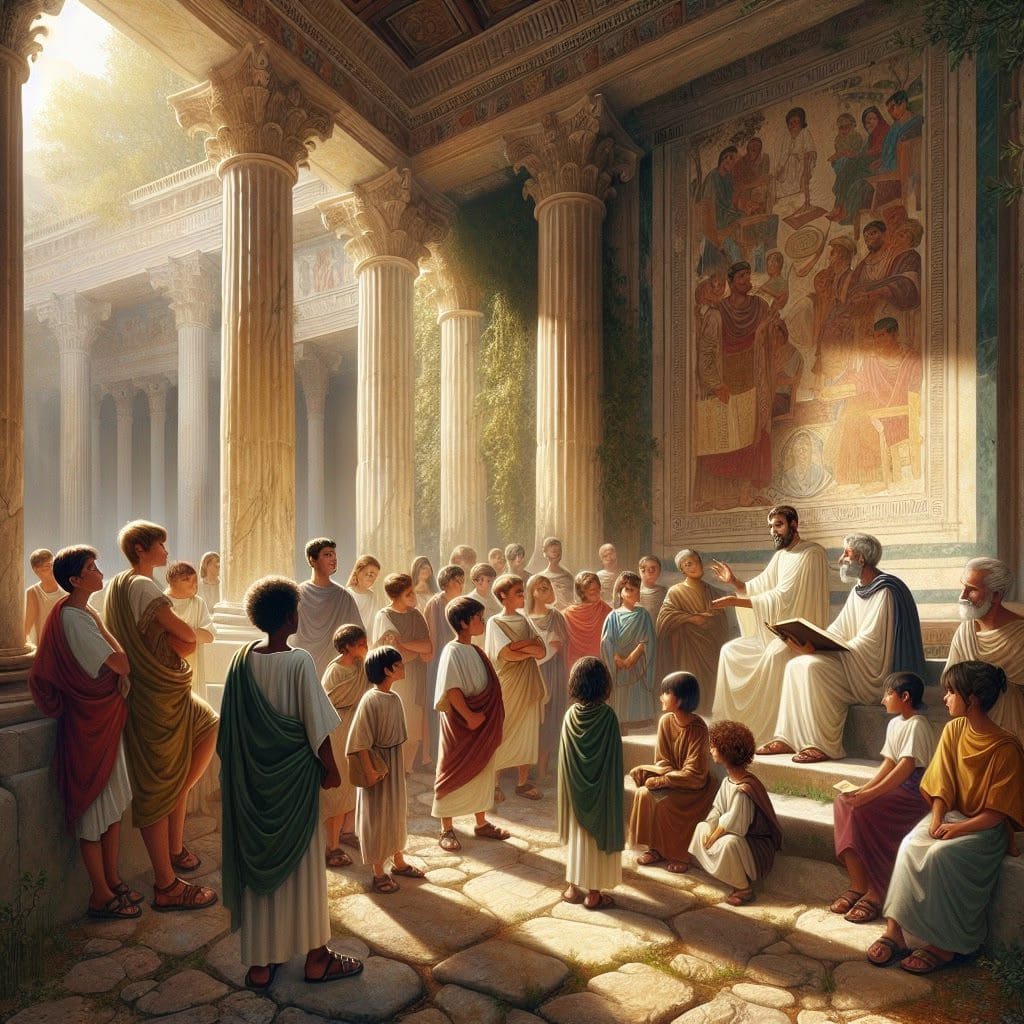
In Ancient Rome, educational opportunities were markedly different for boys and girls, reflecting the broader societal norms of the time. Boys, particularly those from the patrician class, had access to formal education provided by private tutors. This education encompassed subjects such as rhetoric, philosophy, and literature, preparing them for roles in governance and public life.
Conversely, girls’ education was often limited to domestic skills, which reflected their expected roles as wives and mothers. While some girls from affluent families might receive basic literacy training, the focus remained on skills essential for managing a household. Thus, educational paths were largely dictated by gender, with boys being groomed for public roles and girls for private ones.
Societal attitudes towards educating women were predominantly conservative, viewing extensive education as unnecessary for females. Nonetheless, there were exceptions where women from elite families pursued learning, contributing to intellectual pursuits. Despite these exceptions, the ingrained gender roles of Roman society meant that educational opportunities for boys and girls diverged significantly, reinforcing traditional gender roles and societal hierarchies.
Education and Roman Careers
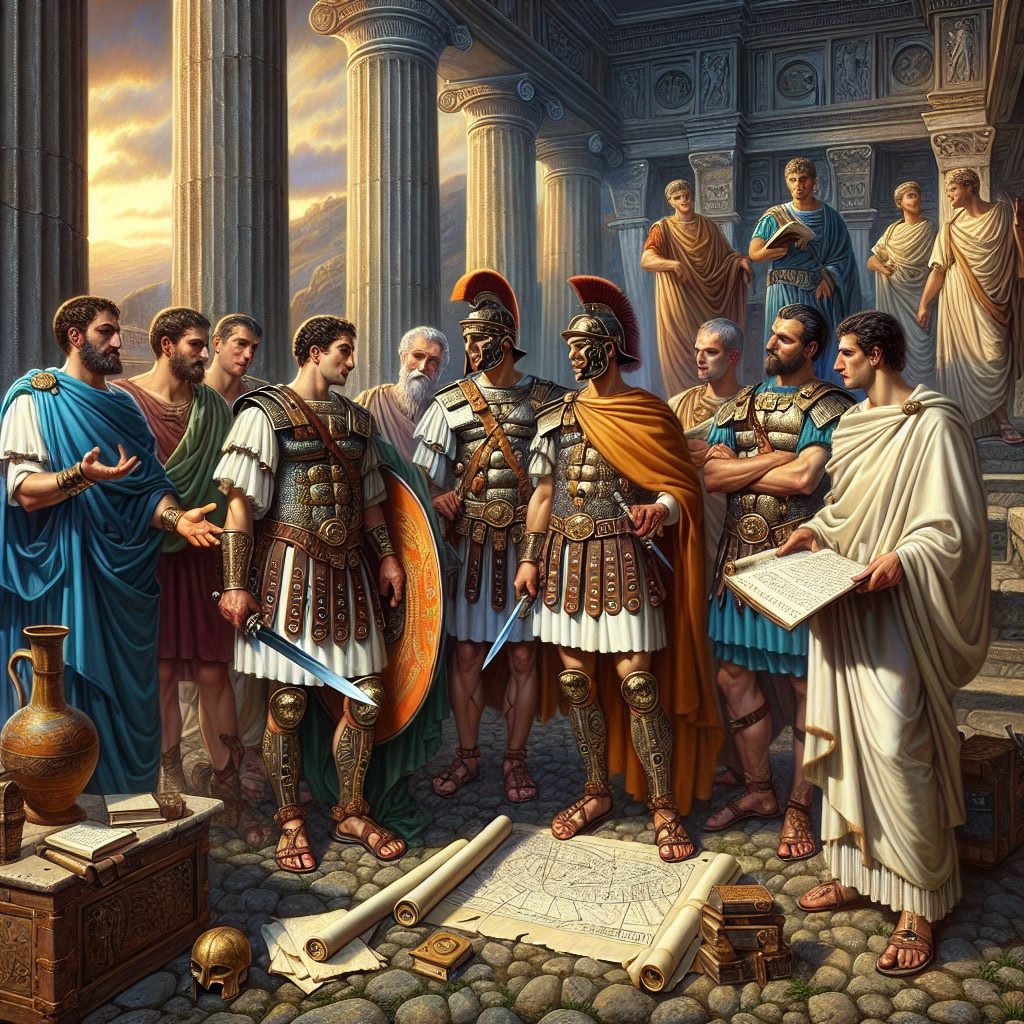
In Ancient Rome, education played a pivotal role in shaping career trajectories. The knowledge and skills acquired through both formal education and practical training significantly influenced the professional paths available to individuals. For patrician youths, the study of rhetoric was not merely academic; it was a cornerstone of public life. Mastery in rhetoric enabled aspiring politicians and statesmen to persuade and lead effectively in the complex arena of Roman politics.
Similarly, military training was essential, particularly for plebeian males. The Roman military was not only a battleground but also an institution of learning. Skills gained through military service, such as leadership and strategic thinking, opened doors to advancement within the army and sometimes beyond, into administrative roles.
Thus, whether through eloquence in speech or prowess in battle, education was a critical determinant of career success in Rome. It provided the tools necessary to navigate and ascend the social and professional hierarchies, underscoring its profound impact on Roman occupational landscapes.
Education and Social Mobility
In Ancient Rome, education served as a double-edged sword for social mobility. On one hand, it provided pathways for certain individuals to transcend their social standings. For instance, notable figures like Cicero, born into a plebeian family, leveraged his education in rhetoric and philosophy to ascend to the heights of political power, illustrating the potential for upward mobility. His achievements underline how educational prowess could unlock doors to influential circles.
However, systemic barriers often curtailed such mobility for the broader populace. The disparity in educational access was stark, with patricians enjoying comprehensive tutelage while plebeians had limited options. Socioeconomic constraints restricted plebeians to apprenticeships and military service, which, although offering some opportunities, seldom equaled the expansive education of their patrician counterparts. Additionally, societal norms and rigid class structures further entrenched these inequalities, making it difficult for many to rise beyond their inherited status.
Thus, while education in Rome enabled a few to defy traditional boundaries, systemic barriers ensured that such instances remained exceptions rather than the rule.
Notable Figures in Roman Education
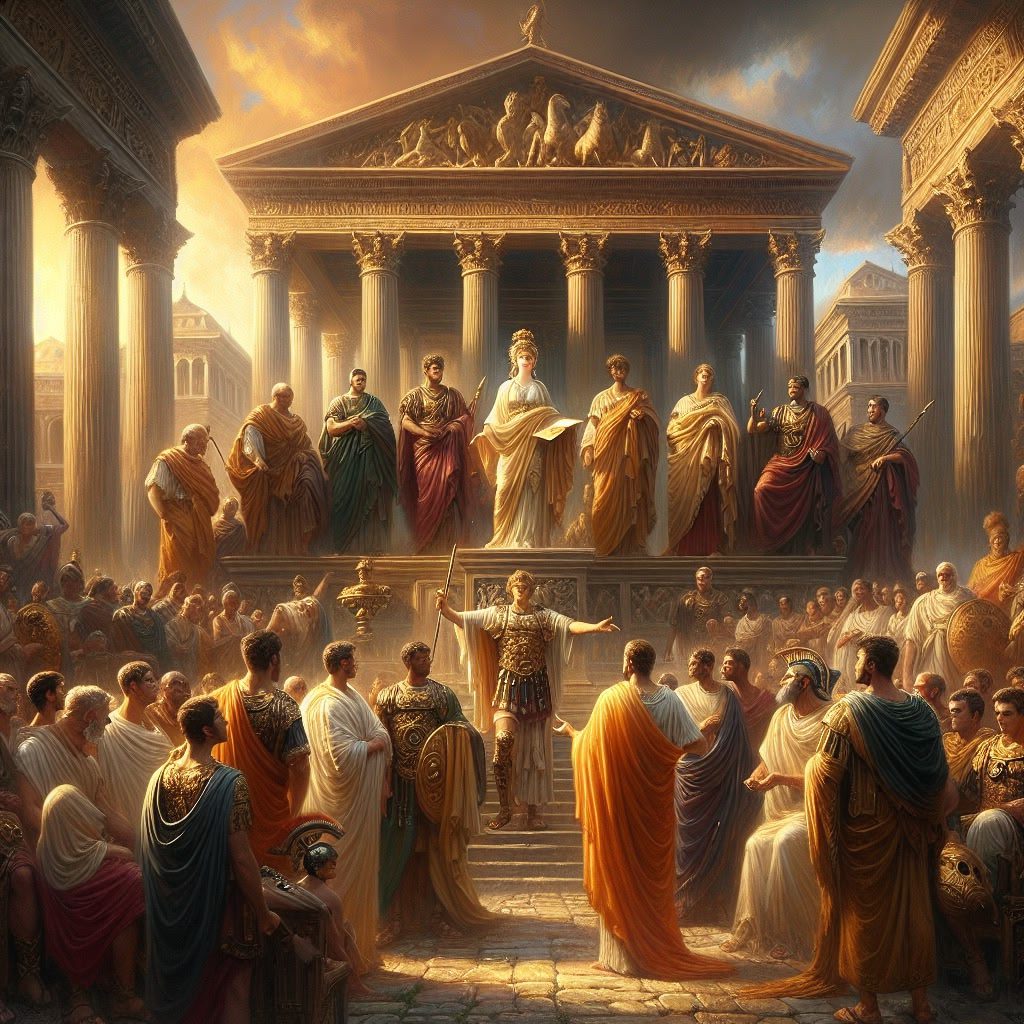
Ancient Rome was home to several prominent individuals whose education significantly impacted society. One such figure is Marcus Tullius Cicero. Born into a plebeian family, Cicero excelled in rhetoric and philosophy, facilitated by private tutors. His mastery of oratory propelled him to the forefront of Roman politics, leaving a lasting legacy as a statesman and philosopher.
Another influential figure is Julius Caesar, whose education spanned literature and military strategy. His comprehensive education, guided by esteemed tutors, equipped him with the skills necessary for both political and military leadership. Caesar’s reforms and conquests had profound effects on the Roman state and its territories.
Lastly, the philosopher Seneca exemplifies how education could cultivate intellectual and ethical development. As a tutor to Emperor Nero, Seneca’s teachings in Stoic philosophy influenced Roman thought and governance. His works continue to be pivotal in philosophical discourse.
These figures underscore how education in Rome was not merely a personal asset but a social force, shaping the course of Roman history and culture.
Data on Roman Education
Analyzing literacy rates in Ancient Rome offers insight into the educational landscape of the era. Estimates suggest that literacy rates ranged from 10% to 20% across the Roman population. This disparity highlights the privilege of education, often reserved for the elite. Patrician children had higher literacy rates due to access to private tutors and formal schooling.
Enrollment in educational paths varied significantly between social classes. Patricians typically engaged in structured education, focusing on rhetoric, philosophy, and literature. In contrast, plebeian children often pursued practical skills through trade apprenticeships or military training. These pathways provided essential skills but offered limited formal education.
The division in educational opportunities reflects the broader social stratifications within Roman society. Despite this, education served as a tool for some upward mobility, allowing individuals from lower classes to rise through military or administrative success. Understanding these educational dynamics is crucial to comprehending the broader societal structure of Ancient Rome.
Common Questions about Roman Education
Understanding the nuances of education in Ancient Rome can be complex. Here are some frequently asked questions that provide clarity:
- Did all Roman children go to school? Not all children attended formal schools. While patrician children often had access to private tutors, many plebeian children learned trades through apprenticeships or joined the military.
- Was education only available to boys? Education was primarily aimed at boys, especially among the upper classes. However, some girls from affluent families received private education, mainly in domestic skills.
- Were literacy rates high in Ancient Rome? Literacy rates were relatively low, estimated between 10% and 20%. Higher literacy was prevalent among the elite, who had more educational opportunities.
- Is it true that education could change social status? Education offered limited upward mobility. Success in military or administrative roles could elevate one’s status, but such instances were not common.
These insights dispel common misconceptions, shedding light on the educational landscape that shaped Roman society.
Impact of Education on Roman Civilization
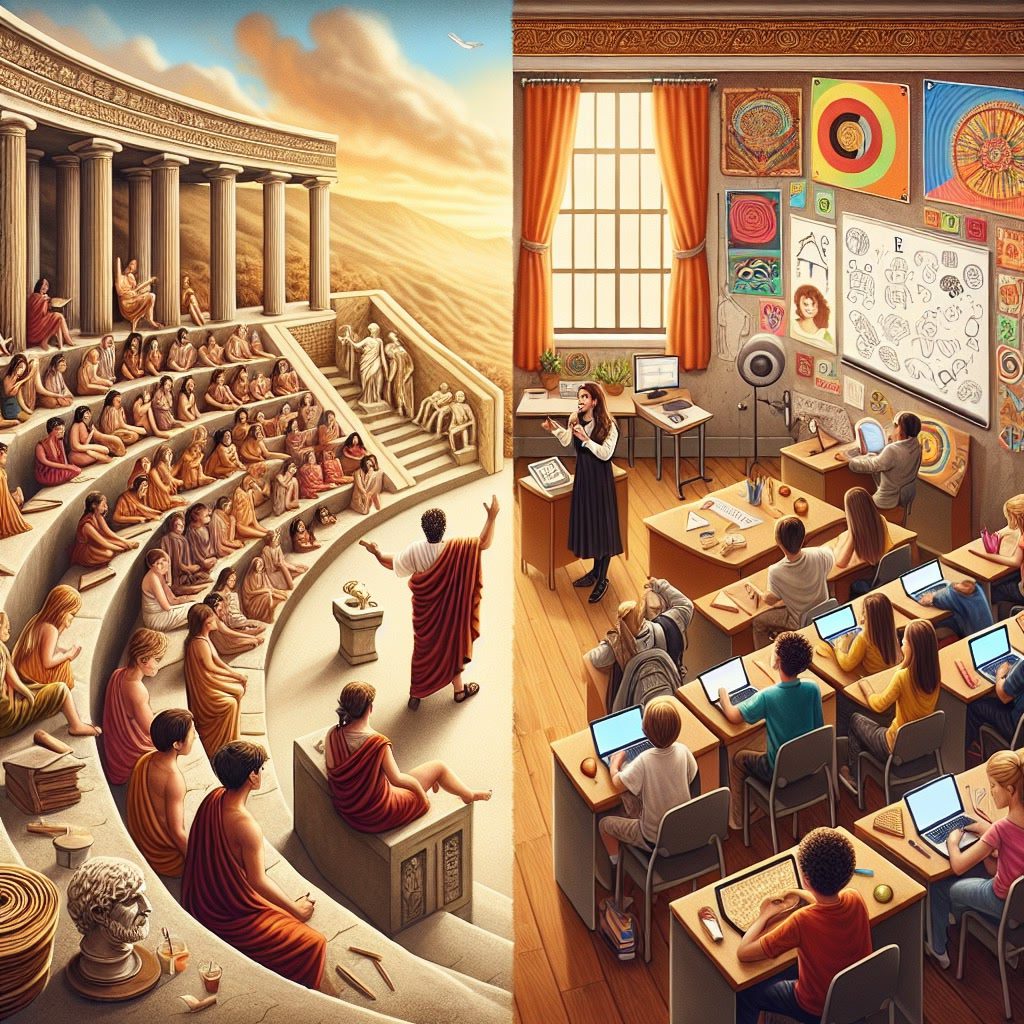
The educational frameworks established in Ancient Rome had profound long-term effects on its society. By nurturing a class of learned individuals, Rome ensured that its civic and administrative functions were carried out by those versed in rhetoric and philosophy. This education system not only preserved the social hierarchy but also facilitated the efficient governance of an expansive empire.
Moreover, the Roman emphasis on rhetoric and public speaking has left a lasting legacy in modern education. Contemporary educational systems often incorporate these elements, reflecting their enduring value in political and legal professions. The Roman model of private tutoring and apprenticeships can also be seen in today’s educational structures, where personalized learning and vocational training remain prominent.
Thus, Roman education not only shaped its own civilization but also laid foundational principles that continue to influence educational practices worldwide. This enduring influence underscores the relevance of Roman educational ideals in understanding the evolution of learning across societies.
Historical Pull Quotes
Roman education was highly esteemed, as echoed in the writings of prominent figures of the era. Cicero, a distinguished orator and philosopher, famously remarked, “To be ignorant of what occurred before you were born is to remain always a child.” This statement underscores the Roman emphasis on historical knowledge as a foundation for civic responsibility and personal growth.
Further reinforcing the value placed on education, Quintilian, a renowned educator of the time, asserted, “The good man, skilled in speaking, is the true Roman ideal.” This quote highlights the critical importance of rhetoric and eloquence in Roman culture, where effective communication was essential for public and political life.
Historians have noted that these educational values were instrumental in maintaining the social order of Ancient Rome. Scholar Mary Beard points out that, “Education was both a privilege and a tool for reinforcing the hierarchy.” This insight reflects how education served as both a means of personal advancement and a mechanism for preserving the status quo.
These historical perspectives reveal the dual role of education in Ancient Rome: as a path to individual enlightenment and a pillar of societal structure.
Conclusion
In examining education in Ancient Rome, we see a clear distinction between the opportunities afforded to patricians and plebeians. Patrician children benefited from private tutors, learning rhetoric and philosophy, whereas plebeian youths often pursued trades or military careers. This educational dichotomy reinforced social hierarchies, yet also provided avenues for mobility, albeit limited.
Roman education was pivotal, not only in preparing individuals for civic duties but also in shaping cultural and intellectual discourse. Its enduring impact is evident in modern educational systems, where the value of a well-rounded education continues to be emphasized. Ultimately, Roman education was both a tool for societal stratification and a catalyst for personal advancement, leaving a legacy that resonates through time.

